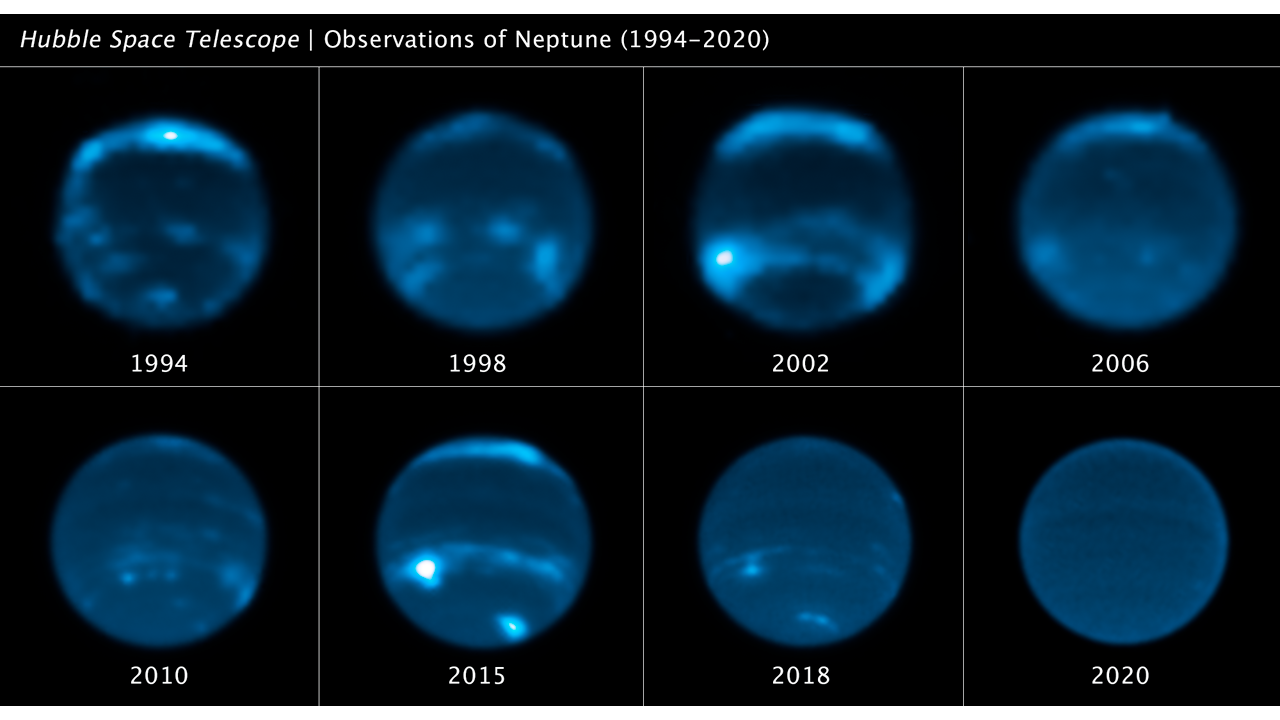All of Neptune’s clouds suddenly vanish, leaving scientists perplexed
Research finds connection between changes in Neptune’s cloud cover and solar cycle
An abundance of clouds seen on the planet Neptune have now all but vanished, rapidly fading out of existance since 2019, “surprising” findings of a new study reveal.
Observations of images of the blue planet taken from 1994 to 2022 suggest Neptune’s clouds are nearly gone with the exception of its south pole.
The research, published recently in the journal Icarus, reveals a connection between the ice giant’s disappearing clouds and the solar cycle.
Scientists, including those from the Keck Observatory in Hawaii, say this link between Neptune’s vanishing clouds and the Sun are “surprising” given that the planet is the farthest major planet in the Solar System, receiving only 1/900th of the sunlight Earth gets.
“I was surprised by how quickly clouds disappeared on Neptune. We essentially saw cloud activity drop within a few months,” study co-author Imke de Pater from UC Berkeley said.
For the study, researchers assessed images taken from 1994 to 2022 using Keck Observatory’s second generation Near-Infrared Camera (NIRC2) as well as observations from Lick Observatory and the Hubble Space Telescope.
The data revealed a connection between changes in Neptune’s cloud cover and the solar cycle – the period when the sun’s magnetic field flips every 11 years, causing levels of solar radiation to fluctuate.
Researchers found that when the sun emits more intense ultraviolet (UV) light more clouds tend to appear on Neptune about two years later.
They also found another correlation between the number of clouds on Neptune, and the ice giant’s brightness from the sunlight reflecting off it.

“Our findings support the theory that the sun’s UV rays, when strong enough, may be triggering a photochemical reaction that produces Neptune’s clouds,” Dr de Pater explained.
“These remarkable data give us the strongest evidence yet that Neptune’s cloud cover correlates with the sun’s cycle,” he added.
Scientists found this association between the solar cycle and Neptune’s cloudy weather pattern by assessing 2.5 cycles of cloud activity recorded over nearly three decades of observations of the icy blue planet.
Researchers found that the planet’s reflectivity increased in 2002, then dimmed in 2007, became bright again in 2015, then darkened in 2020 to the lowest level ever observed – when most of the clouds went away.
However, they say more work is necessary to better understand this correlation and the role played by other factors.
For instance, scientists say while an increase in UV sunlight could produce more clouds and haze, it could also darken them, reducing Neptune’s overall brightness.
They say continued observations of the planet are also needed to see how long the current near-absence of clouds will last.
“We have seen more clouds in the most recent images, in particular at northern latitudes and at high altitudes, as expected from the observed increase in the solar UV flux over the past ~2 years,” Dr de Pater said.
Join our commenting forum
Join thought-provoking conversations, follow other Independent readers and see their replies
Comments


Bookmark popover
Removed from bookmarks